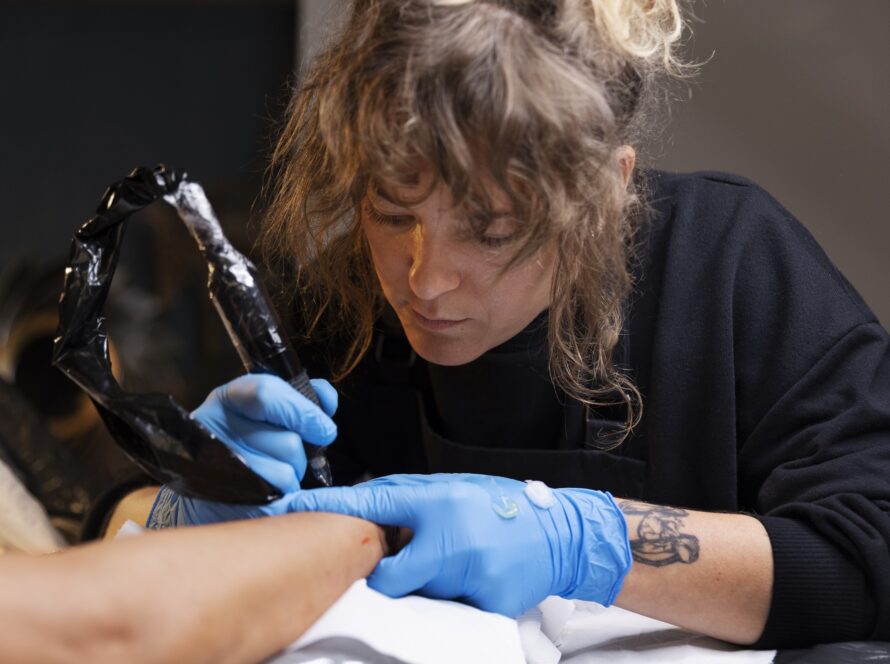Introduction
Moles, though often harmless, can sometimes impact one’s aesthetic confidence. Fortunately, cosmetic mole removal has emerged as a popular solution for those seeking to enhance their appearance and achieve smoother, blemish-free skin. In this guide, we’ll explore the world of cosmetic mole removal, discussing reasons for removal, the procedure itself, and aftercare for a flawless result.
Understanding Cosmetic Mole Removal: Why Consider It?

Understanding cosmetic mole removal involves recognizing that moles, although generally harmless, can be subject to removal for reasons beyond medical necessity. Here are some key points to consider:
Aesthetic Concerns:
- Variability in Appearance: Moles can differ significantly in appearance. They may vary in size, color, and shape. Some people may have moles that they find unattractive or that stand out prominently on their skin.
- Desire for Even Skin Tone: Cosmetic mole removal allows individuals to achieve a more even and uniform skin tone by eliminating moles that may be perceived as blemishes.
Clothing Interference:
- Friction and Discomfort: Moles located in areas where there is frequent friction from clothing, jewelry, or accessories can become irritated or uncomfortable over time.
- Enhanced Comfort: Cosmetic removal in such cases can enhance comfort and eliminate the inconvenience caused by moles that are constantly in contact with clothing or accessories.
Preventive Measures:
- Skin Cancer Risk: While the majority of moles are benign, some individuals may opt for removal as a preventive measure, especially if they have a family history of skin cancer.
- Monitoring Irregular Moles: Regular monitoring of moles is essential for detecting any changes in size, shape, or color. Cosmetic removal might be considered if a mole exhibits irregular characteristics, as a precautionary measure against potential health risks.
It’s important to note that cosmetic mole removal is generally a personal choice and is not always medically necessary. Procedures for removal can include excision, laser therapy, or other methods depending on the size and characteristics of the mole.
Before undergoing cosmetic mole removal, individuals should consult with a dermatologist or healthcare professional to assess the necessity of the procedure and discuss the potential risks and benefits. Additionally, individuals should be aware that some scarring may occur after mole removal, and proper aftercare is crucial for optimal healing.
Cosmetic Mole Removal Techniques
Several techniques are employed for cosmetic mole removal, and the choice depends on factors such as the mole’s size, location, and characteristics. Common methods include:

Excision Surgery:
- Procedure: This involves cutting out the mole using a scalpel or a similar surgical instrument.
- Suitability: Excision surgery is often preferred for larger moles or those that are suspected of being cancerous. It allows for the removal of the entire mole, including the deeper layers.
- Healing: After the mole is excised, the wound is stitched up. Proper aftercare is crucial to minimize scarring.
Laser Removal:
- Procedure: Laser technology is used to break down the pigment in the mole, leading to its gradual fading over time.
- Suitability: Laser removal is typically suitable for smaller moles that are not deeply rooted. It is a less invasive method compared to excision surgery.
- Scarring: Laser removal tends to result in minimal scarring, making it a popular choice for cosmetic mole removal.
Shave Excision:
- Procedure: Shave excision involves shaving off the mole from the surface of the skin using a scalpel or a similar cutting tool.
- Suitability: This method is suitable for protruding moles that are raised above the skin surface.
- Scarring: Shave excision often leaves a flat scar that tends to fade over time. It is considered less invasive than excision surgery.
Electrosurgery:
- Procedure: Electrosurgery involves using an electrical current to remove the mole. The current cuts through the mole tissue and helps control bleeding.
- Suitability: This method is suitable for various mole sizes and types.
- Healing: Similar to other methods, proper wound care is essential for optimal healing and to minimize scarring.
Cryotherapy:
- Procedure: Cryotherapy involves freezing the mole using liquid nitrogen or a similar freezing agent. The frozen mole eventually falls off.
- Suitability: Cryotherapy is often used for smaller moles and is less invasive than some other methods.
- Healing: The area may blister and scab before the mole falls off. Aftercare is necessary to ensure proper healing.
It’s crucial for individuals considering cosmetic mole removal to consult with a qualified dermatologist or healthcare professional. The choice of method depends on factors such as the characteristics of the mole, its location, and the individual’s skin type. Additionally, post-removal care is essential to promote optimal healing and minimize scarring.
Aftercare for a Smooth Result
After cosmetic mole removal, proper aftercare is crucial for optimal healing and minimal scarring:
Keep it Clean:
- Gently clean the treated area with mild soap and water.
- Avoid using harsh chemicals or abrasive cleansers that may irritate the healing skin.
- Pat the area dry with a clean, soft towel, avoiding rubbing or scrubbing.
Moisturize:
- Apply a recommended moisturizer to the treated area to keep the skin hydrated.
- Choose a fragrance-free, hypoallergenic moisturizer to reduce the risk of irritation.
- Moisturizing promotes healthy skin regeneration and helps prevent excessive dryness.
Sun Protection:
- Protect the treated area from direct sunlight during the healing process.
- Use sunscreen with at least SPF 30 on the treated area when going outside, even on cloudy days.
- Reapply sunscreen every two hours or more frequently if sweating or swimming.
Avoid Trauma:
- Be gentle with the treated area to avoid trauma or injury.
- Avoid scratching, picking, or rubbing the healing skin, as this can disrupt the healing process and increase the risk of scarring.
Follow-Up Appointments:
- Attend scheduled follow-up appointments with the dermatologist to monitor the healing progress.
- Report any signs of infection, increased redness, swelling, or other concerns to the healthcare provider.
- Follow any additional instructions provided by the dermatologist for optimal healing.
Avoid Makeup and Harsh Products:
- Refrain from applying makeup or other cosmetic products to the treated area until it has fully healed.
- Avoid using harsh skincare products that may contain irritating ingredients.
Be Patient:
- Healing times can vary depending on the method of mole removal and individual factors.
- Be patient and allow the skin to heal naturally, avoiding interventions that may impede the process.
Conclusion
Cosmetic mole removal offers a pathway to radiant, blemish-free skin, allowing individuals to enhance their aesthetic appearance with confidence. When considering cosmetic mole removal, it’s essential to consult with a qualified dermatologist or cosmetic surgeon to determine the most suitable method for your specific needs. Embrace the journey to smoother, clearer skin and unveil a more confident, radiant you through cosmetic mole removal.



